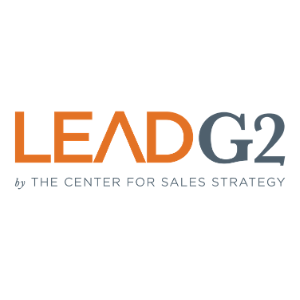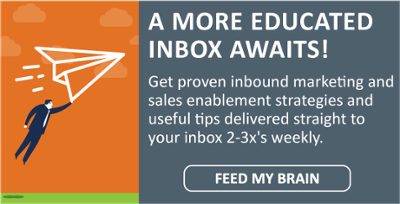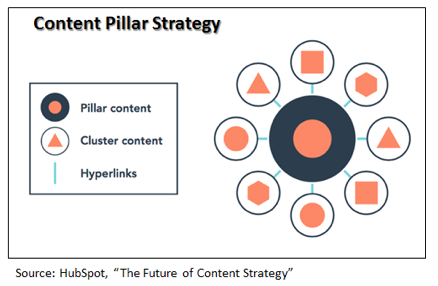From Pain to Qualified Lead to New Client
 So, what niche practice leader or marketer doesn’t love the bottom of the sales funnel?
So, what niche practice leader or marketer doesn’t love the bottom of the sales funnel?
That’s the point where either through a referral, an internet search, or branded communications a prospect contacts you and says, “I have this problem and I’m looking for .....”
Niche practice marketing in professional services like CPA, law and consulting has historically been built to reach this point, and the value of marketing has always been driven by the effectiveness of using marketing resources to reach this point. In large measure, marketing hasn’t been given the seat at the table that it deserves because at any given time only .1% of all of the prospects in your sales funnel are actually at the bottom of the funnel and sales ready.
If the single filter for measure marketing success is bottom of the funnel sales leads, then 99.9% of your marketing activities are ineffective. If you think that’s true, then your niches’ s marketing initiatives can be as simple as referral building events and pounding the phone with cold calls asking questions like, “are you looking for a new auditor today?”
This approach might have been good 5 years ago, but your prospect’s buyer journey has changed with the advent of access to more information. In fact, according to Lori Wizdo writing on Forrester’s blog,
“Today’s buyers control their journey through the buying cycle much more than today’s vendors control the selling cycle. Although it varies greatly with product complexity and market maturity, today’s buyers might be anywhere from two-thirds to 90% of the way through their journey before they reach out to the vendor.”
So let’s look at this, another way.
If Wizdo (and a lot of other research studies) are correct, waiting for someone to engage with you at the end of their buyer’s journey means that you missed significant opportunities to get more visibility and establish your credentials and expertise. Or, perhaps even a bit harsher, if your competitor has been coordinating their marketing efforts with the buyers journey in your niche, you let them control somewhere between 66% and 90% of the conversation with a potential client.
Content is the Currency for Engaging Niche Prospects through the Buyer’s Journey
The secret sauce to today’s niche marketing?
It’s all about integrated marketing that combines traditional strategies and tactics with mapping content to your buyer’s journey. This means delivering the right types of content to the right prospect at the right time. Prospects who have a long buyers journey, like multi-employer benefit plans, could have a journey that lasts years; but a prospect involved in a marital dispute who needs a business valuation may have a journey of only a few months (or even weeks).
One key implication is the need to have an inventory of content ready for use at each stage of the journey, and a means to deliver that content in a timely fashion (i.e. marketing automation). But accordingly to the Content Marketing Institute, only 44% of B2B marketers have a documented content strategy. I suspect that when it comes to accounting, consulting and other professional services firms, this number takes quite a dip.
Take a look at this graphic form HubSpot that can help you on your way to preparing and documenting a content strategy. (Of course, you can also contact us for an extended discussion, here.)

Guidance for Niche Practice Team Leaders and Marketers
Just have a documented strategy in and by itself is not going to be enough to help your tie your niche’s marketing efforts to sales success. Here’s a short list of 5 strategies you’ll want to consider:- Do research – qualitative and quantitative – to understand your prospect’s buying journey
- Develop an inventory of different types of content for different points in the journey
- Automate the delivery process using tools like HubSpot’s workflows
- Measure and monitor activities and make changes for purposes of continuous improvement on your ROI
- Make sure that your sales or business development resources are tied into the journey right from the get go, and identify their accountability – and the timing of that accountability – for bottom of the funnel opportunities.
It’s Your Journey Too
Moving into this new type of marketing for your niche may be uncomfortable, because it’s unknown and unproven that it will be effective. Our suggestion: add content marketing and mapping the buyer’s journey to your current mix of marketing activities, and then measure its effectiveness.
After some period of time, you’ll be able to discern whether or not this strategy deserves more resources and support.
I can’t exactly remember the author, but I do think this quote is appropriate to this discussion: “Success is where preparation and opportunity meet”. The opportunity is now. Are you prepared to meet the challenges, or is your niche marketing going to be driven by a “same old/ same old” mindset?
.png)








Leave a Comment